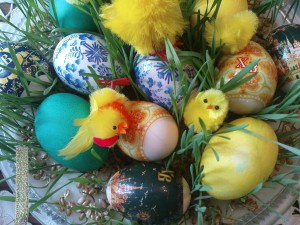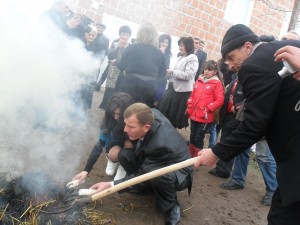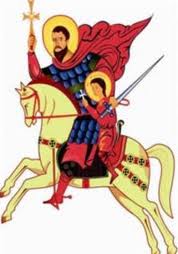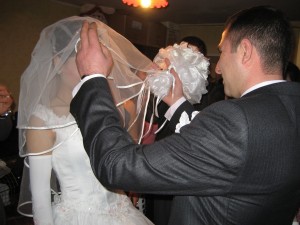All News
geghard
Traditions and celebrations
In Kotayk marz
Surb tsnund-Cristmas
January 6
 Christmas – the Birthday of Christ is celebrated by people all over the world. Armenian celebrate this day as a major Christian religious holiday, together with the Epiphany (baptism) and attend church services in their neighborhoods. Part of the ritual is the “Blessing of Water, when water is blessed with the holy chrism symbolic of Christ’s baptizing.
Christmas – the Birthday of Christ is celebrated by people all over the world. Armenian celebrate this day as a major Christian religious holiday, together with the Epiphany (baptism) and attend church services in their neighborhoods. Part of the ritual is the “Blessing of Water, when water is blessed with the holy chrism symbolic of Christ’s baptizing.
The most beautiful and meaningful parts of the holiday occur at home and in church. Many families go to church on Christmas Eve and Christmas morning. Then they sit down to enjoy a traditional Christmas dinner. According to tradition, the main dish is fish and rice prepared with butter. Red wine is served with dinner.
ZATIK-EASTER
 Zatik (Easter) is the favourite and the most anticipated holiday in the Christian world. Everybody greets each other on this day: “Christ has arisen"-“Blessed is the resurrection of Christ". During the Lenten fasting season of 40 days before Easter, Armenian families put lentils or other sprouting grains on a tray covered with a thin layer of cotton, and keep it in a light place of the house until Easter when sprouts appear. These green sprouts, symbolizing spring and awakening of nature, are the “grass" on which people place colored eggs to decorate the Easter table. To the present day, Armenians have preserved the beautiful biblical lore which refers to red eggs and cheorek (sweet bread): “When Christ was crucified, his mother took some eggs and bread wrapped in the shawl. When the Mother saw her Son crucified and his arms bleeding, she knelt down and cried. The Mother’s tears and Son’s blood dropping on the shawl colored the eggs and bread. Then the Mother put the shawl on her head. Since that day people began coloring eggs red on Easter day and women began wearing shawls when visiting church.
Zatik (Easter) is the favourite and the most anticipated holiday in the Christian world. Everybody greets each other on this day: “Christ has arisen"-“Blessed is the resurrection of Christ". During the Lenten fasting season of 40 days before Easter, Armenian families put lentils or other sprouting grains on a tray covered with a thin layer of cotton, and keep it in a light place of the house until Easter when sprouts appear. These green sprouts, symbolizing spring and awakening of nature, are the “grass" on which people place colored eggs to decorate the Easter table. To the present day, Armenians have preserved the beautiful biblical lore which refers to red eggs and cheorek (sweet bread): “When Christ was crucified, his mother took some eggs and bread wrapped in the shawl. When the Mother saw her Son crucified and his arms bleeding, she knelt down and cried. The Mother’s tears and Son’s blood dropping on the shawl colored the eggs and bread. Then the Mother put the shawl on her head. Since that day people began coloring eggs red on Easter day and women began wearing shawls when visiting church.
Trndez - Purification
 According to religious custom this holiday is connected with the idea of coming forward to the Lord with fire, after 40 days of his birth. The Armenian Church celebrates it on February 13th - 40 days after January 6th, from which it derives the religious name: coming forward to the Lord. The main ceremony of it is a bonfire, symbolizing the coming of spring. Usually young couples jump over the fire, or women who can’t have children, and it’s said that God gives them a child. It’s a very old and interesting holiday in Armenia.
According to religious custom this holiday is connected with the idea of coming forward to the Lord with fire, after 40 days of his birth. The Armenian Church celebrates it on February 13th - 40 days after January 6th, from which it derives the religious name: coming forward to the Lord. The main ceremony of it is a bonfire, symbolizing the coming of spring. Usually young couples jump over the fire, or women who can’t have children, and it’s said that God gives them a child. It’s a very old and interesting holiday in Armenia.
Saint Sargis

St. Sargis is a beloved religious observance and is very popular among young people. It is celebrated 63 days before Easter, on a Saturday falling sometime between January 18 and February 23. On the night of the holiday young people eat salty pies and don’t drink water to encourage dreaming at night. They believe that St. Sargis decides their fate, that the person who gives them water to drink in their dreams will become their future spouse. People also put a plate with flour outside their homes to have a record of St. Sargis’s horse riding through the flour. They believe St. Sargis appears with lightening speed on his radiant horse, and that the traces left on the flour serve as a good sign to bring them luck. In people’s imagination St. Sargis is handsome and appears with a spear, a gold helmet and gold armor.
Vardavar - The feast of water
 In the traditional Armenian range of holidays, the Transfiguration is the major summer holiday and is celebrated 14 weeks after Easter. In pre-Christian Armenia this holiday was associated with the pagan goddess Astghik, to whose heathen temple the young and the old went on pilgrimage. The word Vardavar has two meanings: “the flaming of the rose and “to sprinkle with water. According to legend, the goddess Astghik spread love through the Armenian land by sprinkling rosy water and presenting roses. The god Vahagn kept and protected that love, constantly fighting against evil. This feast was transformed after the adoption of Christianity.
In the traditional Armenian range of holidays, the Transfiguration is the major summer holiday and is celebrated 14 weeks after Easter. In pre-Christian Armenia this holiday was associated with the pagan goddess Astghik, to whose heathen temple the young and the old went on pilgrimage. The word Vardavar has two meanings: “the flaming of the rose and “to sprinkle with water. According to legend, the goddess Astghik spread love through the Armenian land by sprinkling rosy water and presenting roses. The god Vahagn kept and protected that love, constantly fighting against evil. This feast was transformed after the adoption of Christianity.
On Vardavar in modern times, everybody pours water on one another, starting in the early morning; no one is allowed to feel offended or displeased by mischief on that day.
THE ARMENIAN MARRIAGE RITE
 In the Armenian Church this vivid ceremony is a portrayal, step by step, of the new life of husband and wife. The symbolism is striking and points to the love that is yet to be experienced in this holy union. Each of the acts performed during the service has a special meaning and significance.
In the Armenian Church this vivid ceremony is a portrayal, step by step, of the new life of husband and wife. The symbolism is striking and points to the love that is yet to be experienced in this holy union. Each of the acts performed during the service has a special meaning and significance.
After being blessed by the priest, rings are exchanged between the bride and groom, giving expression to the fact that spouses in marriage will constantly be complementing each other. Each will be enriched by the union. During the exhortation to the bride and groom and later on in the service, the right hands of the bride and groom are joined to symbolize the oneness of the couple.
The rite of crowning is the peak of the wedding service. The crowns are the sign of the glory and honor with which God crowns them during the Sacrament.
The groom and the bride are crowned as the king and the queen of their own little kingdom, the home, which they will rule with wisdom, justice, and integrity. During the crowning, the bride and groom face one another and the godfather stands next to them, holding a cross over their heads.
The rite of crowning is followed by the blessing of the couple’s common cup when a goblet of wine is blessed in remembrance of the marriage at Cana of Galilee which was blessed by Christ’s presence. The drinking of the wine from the goblet serves to impress upon the couple that from that moment on they will share everything in life, joys as well as sorrow. At the end of the wedding ceremony the priest blesses the couple, asking Christ to "protect them under the shadow of thy holy and honorable cross in peace". Thus God’s grace is imparted to them to live together in His love, mutually fulfilling and perfecting each other.

